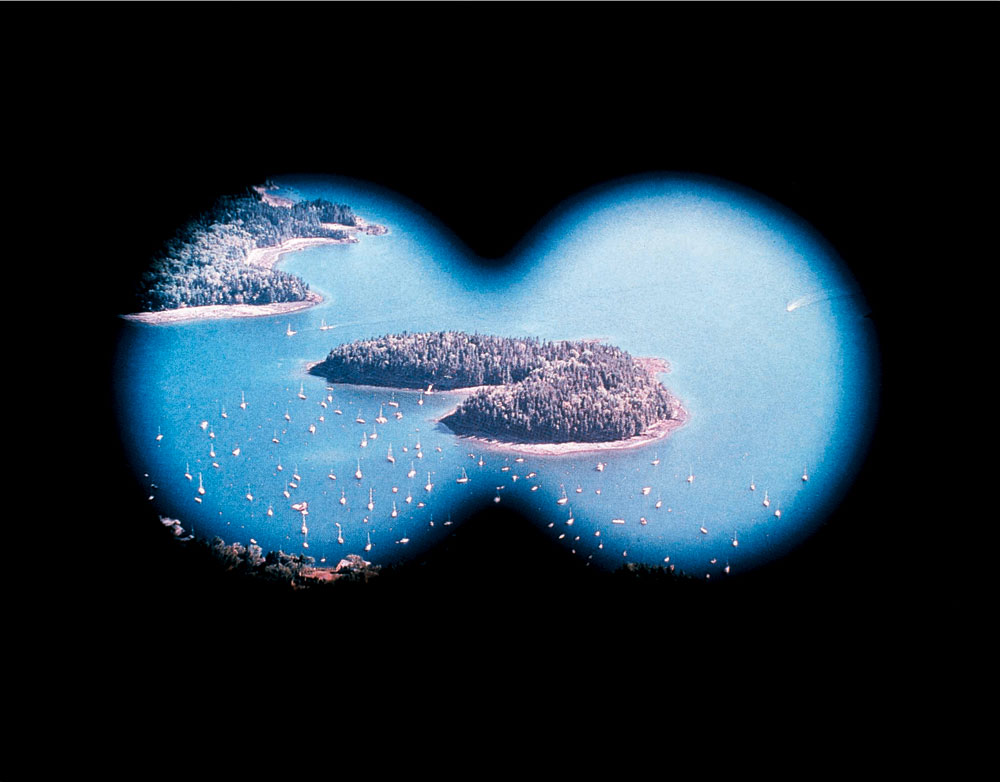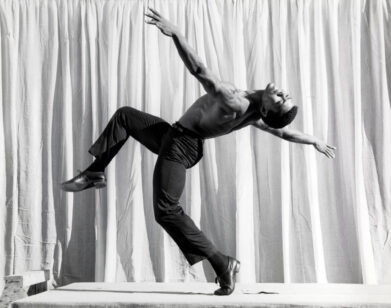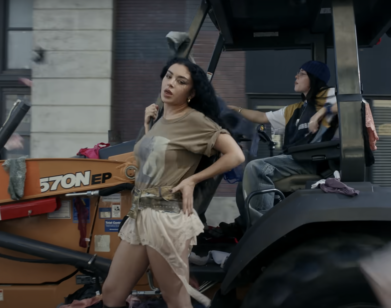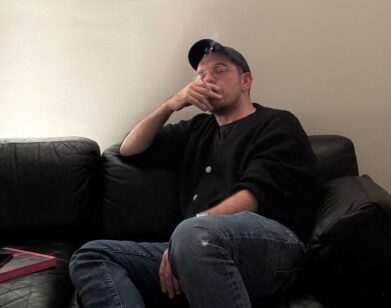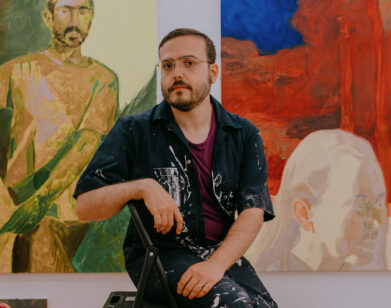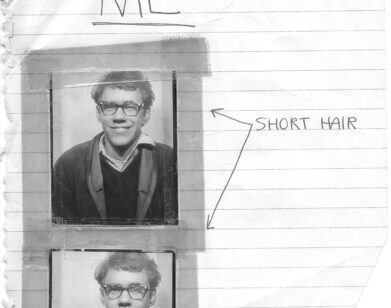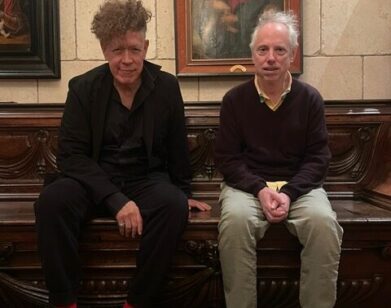Piotr UklaÅ?ski on Death and DalÃ
Appropriation is not quite the word to describe Polish artist Piotr UklaÅ?ski’s photography, but neither is reproduction. Perhaps, rather, an ode to the readymade or sardonic adaptation of trite subject matter might be more fitting. UklaÅ?ski interprets what he sees and then does what he deems fitting, be it remaking an existing image in the same vein as Sherrie Levine but with an added amount of distortion, or creating a spread (Untitled [GingerAss]) for a 2003 issue Artforum that directly references Lynda Bengalis’s controversial ad in a 1974 issue of the same magazine. Despite it’s historical and culturally significant subject matter, however, UklaÅ?ski’s photographic work remains relatively unseen in New York, with former exhibitions at galleries such as Gavin Brown’s Enterprise and Gagosian having favored his installations, fiber art, assemblages, and resin- and tie-dye-made paintings. But earlier this week, that changed with the exhibition “Fatal Attraction: Piotr UklaÅ?ski Photographs” at the Metropolitan Museum of Art.
The survey of UklaÅ?ski’s photography made between 1997 and 2013 explores the clichés of popular imagery, including kitsch subject matter such as waterfalls and sunsets, but also the themes of death and darkness. The waterfall and sunset come from his series The Joy of Photography (1997-2007), in which he studied the subjects of Eastman Kodak’s how-to manual for the serious amateur through his characteristically irreverent point of view. Other photos—such as the series The Nazis (1998), which features more than 100 headshots of movie and television actors dressed as Nazis—expose UklaÅ?ski’s obsession with the taboo. At the end of the gallery is UklaÅ?ski’s fiber art sculpture, Untitled (Story of the Eye), 2013, reminding the viewer that the artist’s eye goes far beyond the two-dimensional.
In addition to the survey of his own work, UklaÅ?ski scoured the Met’s archives to curate his own show, “Fatal Attraction: Piotr UklaÅ?ski Selects from the Met Collection,” that explores the themes of Eros (life force) and Thanatos (death drive) in a neighboring gallery. He also transposed his 2007 diptych Untitled (Solidamosc), which depicts 3,000 soldiers from the Polish army in the GdaÅ?sk shipyard, into banners that now hang in the museum’s great hall.
Prior to the exhibitions’ openings, we spoke with Warsaw-born, New York-based artist in the Met’s Balcony Lounge, while UklaÅ?ski’s wife, the curator and writer Alison Gingeras, sat across from us, reading The New York Times.
PIOTR UKLAÅ?SKI: I’m all coffeed out.
EMILY MCDERMOTT: Long morning?
UKLAÅ?SKI: Yeah. [laughs] We were early today because these banners, we were hanging at 7:00…I did the coffee, coffee, coffee.
MCDERMOTT: What was it like recreating your diptych into banners for the space?
UKLAÅ?SKI: I always thought this work needs less of a precious photograph and more of a display like a flag—not unlike the Pope image, which first was shown as a billboard in Warsaw. So yeah, it was fun, it was a good go.
MCDERMOTT: Do you think it changes the message or the meaning behind the image, having them displayed as the banners, like flags?
UKLAÅ?SKI: I think that the context of the great hall changes because all of a sudden—I never would imagine it hanging above a sphinx, you know? It’s interesting that way. The medium itself, I don’t think so. It has that kind of grand, pompous reference, which it should.
MCDERMOTT: Do you like the fact that it’s hanging over the sphinx in this grand hallway?
UKLAÅ?SKI: I do. It’s pretty flattering.
MCDERMOTT: What’s it like having your photographs on display for the first time in New York? How did this come about?
UKLAÅ?SKI: It was a long process of the museum taking interest in the work, Doug [Eklund, Curator in the Department of Photographs at the Met] approaching me. Then it grew as our dialogue progressed from the Menschel Hall show [where my own work is on view] to the selection [from the archives] and the banners. Always when you talk to somebody who is educated, informed, and has a different view on your work than you, then it’s good.
MCDERMOTT: I found it interesting that this show is happening at the Met…The Met has been doing more with contemporary art recently, but they’re not known for sort of cutting edge, contemporary work. What do you think of the placement?
UKLAÅ?SKI: [laughs] Am I cutting edge? I wonder. Maybe not any more, since the Met is doing it with me! The context of photography, even of contemporary photography, hasn’t really embraced these works. I’ve had numerous shows [abroad], but they were all individual shows of my photographs. It’s never photographic surveys, group surveys.
MCDERMOTT: Then why include a sculpture with the photographs?
UKLAÅ?SKI: I was totally on board with that because I think it’s good to point to other practices. Even if it’s an easy decision, you can’t resist it.
MCDERMOTT: Working with so many mediums, how do you balance all of them?
UKLAÅ?SKI: It used to be easy because I would just have an idea and was able to drop everything and go after this idea. So, let’s say I was doing photographs and then I moved to film, or from film to painting, from painting to fiber art—it gets increasingly hard, because you never really abandon the previous body. While I stopped intensely working on photographs, I always did photographs over the years. At some point, you end up dragging nine bodies of work and, you know, there’s only 24 hours in a day. [laughs] So it’s a lot harder, but it’s fun. I don’t think that an artist that works with multiple bodies is more interesting than one that works with one, but it does help make it more interesting.
MCDERMOTT: In past interviews you mentioned that you see painting as a means rather than an end. How do you see that translate into photography?
UKLAÅ?SKI: [sighs] I wonder, because there are quite a few works that really point to an end image, so to speak, and I have a bit of life left, so I need to keep making those images. I don’t think I have a clear answer to that; it’s a good head-scratcher.
MCDERMOTT: With your works on view, how did you first come across the how-to guide and what struck you about that?
UKLAÅ?SKI: The space being so tall and rather narrow, it has its challenges. I think that I tried to set it up somewhat chronologically and if you look at it, that kind of ends up happening with that rear wall being most recent images. There’s obviously much more works than what we showed. It’s not exactly a retrospective of every single [image], but you have both the appropriated images and then you have the progressively abstract—they are running away from the figure and then some works return, but in this very oddball way, with those dark images at the end.
MCDERMOTT: Like social commentary, criticism. What made you want to use Dalí’s In Volupta Mars as a reference?
UKLAÅ?SKI: I think it’s like a self-aware reference to narcissism, the narcissism of an artist. We’re surrounded by nude bodies. At the same time, I think that while creating—I’d like to say a successful image—an icon, it’s so obvious that it’s borrowed. In some way I think that takes away the potential indulgence of it or I would hope. And, therefore, really strips it of its constructions of how we self-mythologize ourselves, particularly artists. We edit, we create, we send out messages, and maybe something else, too.
Somebody asked me today about the Eros and Thanatos. [The culture] we come from, especially the culture outside of this building, is so eroticized. We sort of got rid of the issue of death because it gets in the way. You come into a place like this, and it’s all about the other side; it’s about the consecration of deadly objects that are left over after all these people of the past die. This is just what’s going to happen. That’s what I wanted to look at in the show a little bit.
MCDERMOTT: So even through the themes of love and death, you want to address the changing perspective of our self-reflection?
UKLAÅ?SKI: Well, for example, how there used to be issues we invested in so much. You know, poets, writing, Hamlet with the skull, that’s changed over time and to what effect? I don’t want to put a word on this, because I think that the exhibition in Gilman summarizes, but I think it is my statement of that. Yes.
MCDERMOTT: The exhibit in Gilman has such a range of artists—from ancient B.C. works to Larry Clark and Laurie Simmons—yet there are definitely recurring elements. What was it like going into all of the archives? Were you familiar with the archives at all?
UKLAÅ?SKI: It was hard to create an off-beaten path because the museum has its own ways, I’ve learned. [laughs] It was really starting from scratch—subject, content. I don’t really set out to do such drowned themes, but I think that this museum’s agenda of passing on the message of civilizations and cultures lends itself to the subject and erotica. On one hand, brightens it up. On the other hand, it’s almost like un-separable reproduction. Obviously you could have done so many other [themes], but I felt like what’s most essential is these two.
The collection, that’s been a learning curve, because there is so much. I’m not an art historian. Validation is a response that I have to what I know, what I like. I worked with the curators of the departments, and once I got into the photography, then I really let go. That’s something I’m really interested in. I love the historical collection they have—numbers, positions, often contradicting—that somewhat also map out how the museum came to be, how the collection came to be. I know it’s so generalized, but I’m trying to go back and relive my experience. It’s been really great and that was rewarding. I’ve learned so much because I got this chance to deal with actual work. If you see Robert Capa’s image, how he retouched it, and can hold it in your hand, with gloves, of course, then you learn a lot about what photography is. It’s an incredibly different experience [than learning through] books.
MCDERMOTT: I know you first studied painting, but what made you want to switch to photo at Cooper Union?
UKLAÅ?SKI: I studied painting, but in the evenings I was doing performances. The performances, at the time, I was interested in for photographs. It was sort of like I was creating an image in the performance, and that in some way led me to my interest in photography. And interestingly, I would dog sit, I had to make money. [laughs] I lived in New York, I didn’t have any support, I was the classic “got off the plane to go to school.” So I worked in the studios, and I think the two collided. With people, like Guy Bourdin—at the time I did not know who Guy Bourdin was—you realize that you can work in the commercial world of photography and still make art. That’s what I was aiming at. That’s not exactly how I ended up supporting myself as an artist, but that was the interest that I took when it came to photography.
MCDERMOTT: Is that why you think you’re drawn to, not so much appropriation, but the reproduction of readymade images?
UKLAÅ?SKI: I think it’s a consequence of my growing up as an artist—your disbelief in the image.
MCDERMOTT: I know there’s a big difference between pessimism and cynicism for you. How would you describe that difference?
UKLAÅ?SKI: I don’t really relate to cynicism. I think it’s a short-term strategy and I was never really interested in it. Pessimism, yes. I hope my image is a little more complicated than cynicism.
MCDERMOTT: Would you consider yourself a pessimist?
UKLAÅ?SKI: Oh, certainly.
MCDERMOTT: About everything?
UKLAÅ?SKI: A depressive. [laughs]
MCDERMOTT: How do you think living in New York but having your roots in Poland influenced your art overall? I know it obviously has, but today, after living here for so long, how do you think it plays a role?
UKLAÅ?SKI: It’s funny. It’s also like a retarded cliché. I don’t feel I’m an American; I feel I’m a New Yorker. Alison, my wife, often laughs that I’m more American sometimes than her, because I love American things—fast cars with big engines, ridiculous shit like that. But I don’t get up and read The New York Times; I get up and read Polish news. There’s something ghetto about my experience as well…
MCDERMOTT: Maybe it’s because of that pessimistic attitude. [both laugh]
UKLAÅ?SKI: No! It’s that I know more about Ukraine, and she knows more about Massachusetts or California. You will never get rid of this, but at the same time you become a person that’s shaped by two experiences to an extent—this is not, by the way, a compliment—but you become its own thing. Like, I go to Poland and I don’t quite fit there. They have their own place, own life, but I will always say I’m Polish and this is really important to me and really important to my work. And maybe at some point, I’m just going to give into being Polish only.
MCDERMOTT: How would you describe your philosophy for art?
UKLAÅ?SKI: Cheerful pessimism. [laughs]
“FATAL ATTRACTION: PIOTR UKLANSKI PHOTOGRAPHS” IS ON VIEW THROUGH AUGUST 16. “FATAL ATTRACTION: PIOTR UKLANSKI SELECTS FROM THE MET COLLECTION” IS ON VIEW THROUGH JUNE 14.

